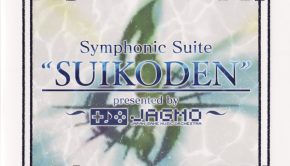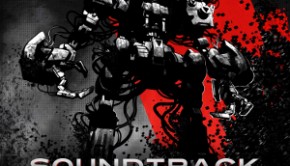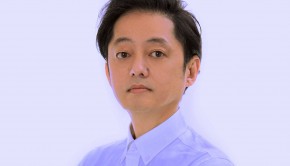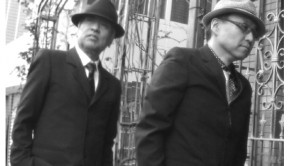Miki Higashino Interview: Retired Fan Favourite Speaks
Joining Konami straight out of college in 1984, Miki Higashino was one of the first musicians to make an impact on the games industry. She initially created the pleasant melodies of the classic space shooter Gradius and went on to work on a string of other hits: Salamander, Teenage Mutant Ninja Turtles, Contra III, Premier Soccer, and Tokimeki Memorial. Yet she is best known for her rich worldly stylings on the first instalments of the Suikoden series.
In this interview, Miki Higashino takes some time out of retirement to give insight into life and works. Having left Konami a decade ago, she has many memories to share about her time there. She particularly focuses in on her contributions for the Gradius and Suikoden series, including their wider legacy. She closes by talking about leaving work for her personal life and discusses some of her recent activities, notably a charity album. It’s a must-read for all game music enthusiasts.
Interview Credits
Interview Subject: Miki Higashino
Interviewer: Chris Greening
Editor: Chris Greening
Translation & Localisation: Ben Schweitzer
Coordination: Don Kotowski
Interview Content
Chris: Miki Higashino, many thanks for talking to us today about your game music works.
Miki Higashino: It is my pleasure.
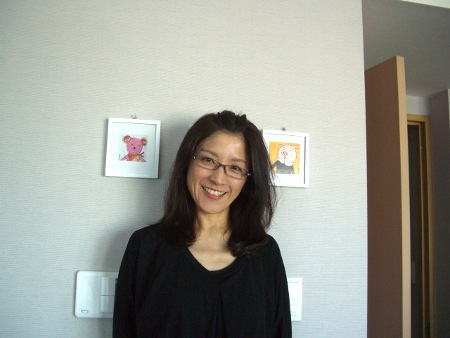
Chris: Now that you have left the industry, how does it feel to recollect your works? Are you memories mostly good or bad ones?
Miki Higashino: For better or worse, Suikoden II is my representative work. From the beginning, the sound staff consisted simply of myself and Kiyohiko Yamane-san, the programmer. But it was such a large project: we had to compose dozens of pieces of background music, create sound effects, work on getting the right timbres, record the orchestra and Orizzonte, and sing, for some reason (laughs); on top of that, we helped with testing, so it was a lot of ground to cover.
I know it was this way because they didn’t have the budget for more people, but looking back it seems really reckless. But at the time, I just kept thinking that, if the two of us tried hard enough, we would somehow manage to get through. We had no personal lives for months at a time. By the time it was over, I had slimmed down (laughs).
I don’t think I would ever work that way now. It would be faster and make more sense to split the duties amongst several people. But, I experienced all sorts of things as a result, and I was able to get through this roughest part of my career. Because I put all the effort I could into my work, I am completely satisfied with the result.
Chris: Until now, there is little information about your background. Could you tell us about your musical education and experiences? What inspired you to become a video game composer?
Miki Higashino: When I was five years old, I began learning piano and solfège. My father was a lover of classical music, so every Sunday morning, he would put on records and spend time listening. I attended a private missionary school for middle and high school, so I sang a good deal of church music. I formed a band, and composed and sang original songs.
I was thinking of going to a music college, but I wasn’t good enough as a pianist, so I entered the composition department instead. At college, however, atonal modernist music reigned supreme, and that was completely antithetical to the music I wanted to write. As for minimalism, like the work of Steve Reich, my professor said “I refuse to even acknowledge such music”.
Just when I was bored, not doing anything, and having no real desire to go forward, I heard that Konami was looking for a part-time composer. It sounded interesting, so I applied for the job. This was in 1984. I didn’t even know what game music was like, so I created a few pieces on my own, and they got me the job. “Great! This is a place where I can do some good!” After that, I began writing more and more pieces. That was the beginning of my career.

Chris: Even though you were new to the industry, you were given the task of composing one of Konami’s defining hits: Gradius? Why do you choose an upbeat melodic approach to this space shooter? Did you expect the game to be such a big hit?
Miki Higashino: Why indeed? (laughs) It was probably because in my mind, “outer space” connoted computers, robots, the future and so forth. So to express those concepts, I made use of the lydian mode, odd meters and rapid arpeggios. The fast tempo is probably connected to the programming in some way, but it didn’t seem all that fast to me.
There are a good many game composers who say “I was influenced by Yellow Magic Orchestra (YMO)”, but I’m a few years their senior (laughs), so my introduction to the synthesizer sound came thorugh Kraftwerk. I think that influence came through in the music of Gradius.
Chris: Did you expect the game to be such a big hit?
Miki Higashino: Nope, not at all! It wasn’t until a while later that I heard how big of a hit it had become. I was just excited by the cool, futuristic sound coupled with the shining, beautiful graphics.
Chris: You received an opportunity to contribute to music for two other shooters, Salamander / Life Force and Gradius III. How were these scores developments musically and technologically? What was it like to work with ensemble teams on the titles?
Miki Higashino: Prophet Fukami-san was the sound director on Gradius III, so I wrote “his kind” of music. There were far fewer limitations on the sound system compared with the first Gradius, and I had to write large-scale pieces, so I analyzed the materials he provided — studying them.
Salamander / Life Force was a project from when I was a part-timer, so I was given instructions by the sound programmer. “Make it groovier” and so on. I didn’t know exactly what groovy meant, so that was a bit of a problem (laughs). I reworked it over and over, and in the end, I made good use of shuffle rhythm. So I got a new skill out of the experience, and I think the resulting music was pretty interesting.
Chris: Among your other iconic soundtracks are Knightmare, Teenage Mutant Ninja Turtles: Tournament Fighters, and Contra III: The Alien Wars, made for the MSX, Genesis, and the Super Nintendo. Could you tell us how you approached each of these projects?
Miki Higashino: I worked on Knightmare as a part-time composer, so I only wrote the music. I didn’t have to use the MSX hardware. In contrast to the earlier Contra games, Contra III went for a sound more akin to a film score, but it wasn’t received all that well, was it?
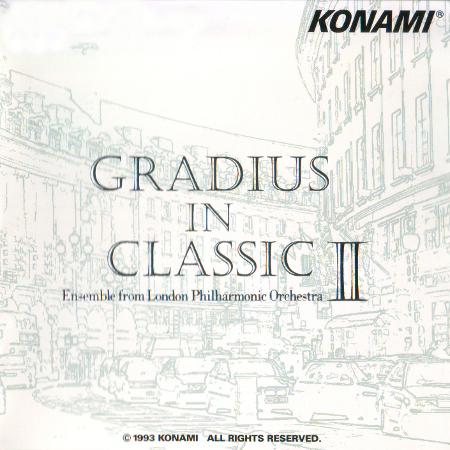
Teenage Mutant Ninja Turtles: Tournament Fighters was composed in collaboration with D.J. Ada-san (Masanori Adachi) of the Thelonious Monkees. He knew a lot about techno music, but also about music in general, and I learned a good deal from him. He was very passionate about things like getting the coolest short drum fill he could. We had limited memory to work with, so he spent three to four days getting a kick that sounded good even after compression. I also worked on the rhythm lines.
Chris: Was it challenging to overcome the limitations of their sound systems?
Miki Higashino: Everyone on Konami’s sound staff, not just I, spent countless hours working on music and sound effects, trying to overcome the limitations of the sound systems we worked with. You had to be persistent, and keep going through the process of trial and error — just the image that one holds of a Japanese salaryman. Watching them, my perceptions of music and work changed dramatically.
Chris: You mentioned the Thelonious Monkees. Could you discuss your collaboration with this band on projects such as Moon? Were you an official member?
Miki Higashino: I am not a member of the the Thelonious Monkees, and I didn’t write any music forMoon. I am, however, good friends with the band, and I often stopped by the Love-de-Lic office. They are all extremely unique artists, not bound by convention.
Chris: You also had some involvement in the Tokimeki Memorial series. What were your contributions for this series? Was it because of this work that you came to describe yourself more as a songwriter than a composer?
Miki Higashino: As I said earlier, I wrote songs for my band, so I was a songwriter from the beginning. The Tokimeki Memorial series was fun to work on. In addition to songs, I wrote a number of character themes and background music for the shops and such. I was allowed to use a generous number of voices in my synth arrangements. I never thought for a moment that the game would become such a phenomenon, but now it’s one of my favorites.
Chris: You were one of the first composers to demonstrate the enormous potential of the PlayStation through 1995’s Suikoden. How did you match the world of this game with ethnic and orchestral sounds? Did any particular artists inspire you?
Miki Higashino: At the beginning of the project I spent two days reading through the scenario, and even then I had come up with ideas for the music in my mind.
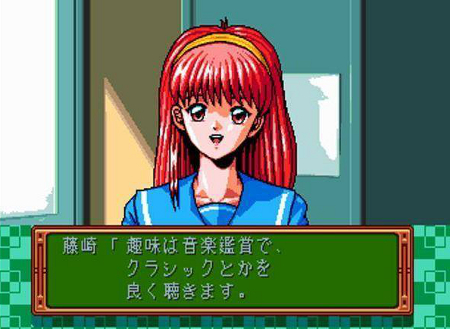
Suikoden is based on one of the most important historical novels of Chinese literature. but the game’s towns, cities, and characters span an entire world, with elements of all kinds of cultures, East and West. I realized that it couldn’t all be depicted using a single genre of music. On top of that, the game was on a massive scale, and there was no doubt that this world was unlike anything seen before in an RPG. So I decided to compose something completely different from the music in a Final Fantasy or Dragon Quest.
The development team wanted theme music for every character, but with 108 characters joining the player’s party, it just wasn’t feasible. Personally, the only characters that stood out to me were Neclord and Millich Oppenheimer (laughs).
Chris: There is a big shift in sound from the simple but charming chiptunes of Gradius to the elaborate world stylings of Suikoden. Is this primarily because of technical factors? Or do you think you developed as a musician at Konami?
Miki Higashino: Both. Naturally, it takes a different approach to compose a piece for the old hardware, using three channels, than to compose for PCM, with its absence of limitations. Also, when I was working part-time, the sound programmer had the right of decision, so to me the technical elements were like a black box, so to speak.
With my later games I had overall control of music production, and I was even asked to handle the schedule and budget. I was continually inspired through my collaborations with my fellow composers, both as a musician and as a person.
Chris: Suikoden II was completely unprecedented in its time in terms of quality and quantity. Could you elaborate on how you developed the music of this score?
Miki Higashino: Suikoden II was on an even larger scale than its predecessor, as I knew the moment I laid eyes on its thick scenario. As there was a clear increase in the number of cities and towns, I felt there was a need for a more methodical compositional process.
I would begin by looking at all of the maps I’d received, and think about what kind of people would live in each area and what kind of culture they would have. What kind of climate, races, and industry would there be? Then I would decide on Celtic and early music here, with Spanish music and fado in the city to the south, Middle Eastern music over there, for the ninja village, Japanese music, of course, and so on for each area.
You enter a city, and it’s as if you can hear the music that would actually be performed there, somewhere; isn’t it a bit like taking the player on a journey around the world? So I spent that time searching for and listening to all kinds of folk music and ethnic pop.
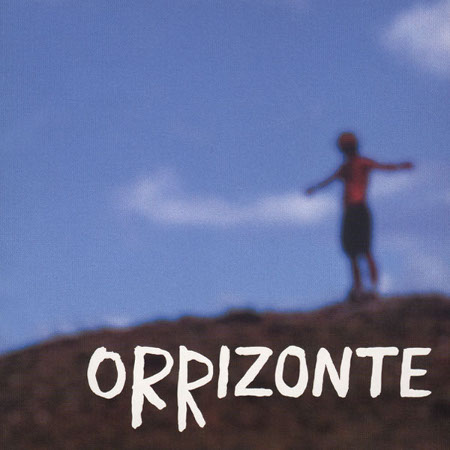
Chris: Do you consider Suikoden II your finest work, or do you have other personal favourites?
Miki Higashino: Oh, it seems I’m spending quite a bit of time on the Suikoden series…
Actually, my personal favorite work is the arcade game Premier Soccer. The music is in a fusion style, entirely different from Suikoden or Gradius, but the music represents me well. I also created all of the sound effects. I heard that the game was a huge hit throughout Europe, especially in Italy. I think you can still find it in arcades and Japanese hot spring hotels. It’s a simple soccer game, but it’s quite fun. I was delighted to have my first solo project, and listening to the music brings back the optimism I felt at the time. I went to work every day giddy as a schoolgirl.
Chris: Suikoden and Gradius both have massive discographies, comprising various soundtrack releases and arranged albums. What are your thoughts on this? Could you tell us about your personal involvement in two of these releases, Gradius in Classic II and Suikoden II Music Collection -Orrizonte-?
Miki Higashino: I don’t like arranging. That’s why I prefer to have someone else arrange my work rather than arrange it myself. If someone else arranges or remixes a composer’s music, they can bring out a new side that even the composer had not seen.
I arranged one piece for Gradius in Classic II, as did Michiru Yamane. But I was unable to attend the recording sessions in London, as I was busy with other work. We actually had to send the scores for the individual parts, from Tokyo to the studio, via fax!
Orizzonte is the Italian word for horizon. Due to a spelling mistake by the designer, it ended up as “orrizonte”. The other way is the right one! In any event, Yuji Yoshino-san and Yoko Ueno-san handled the arrangements. I participated in the chorus. It was wonderful to be right there in the studio watching first class musicians at work.
Chris: Before leaving Konami, you revisited Suikoden once more with the Gensosuikogaiden titles. Did you compose these scores knowing that they would be your last at Konami?
Miki Higashino: Yes, I did.
Chris: What inspired you to leave thereafter?
Miki Higashino: One day, I felt like the goddess of music was whispering in my ear, saying “Isn’t it time to put down that burden? You’ve done so well. If you’re gonna quit, now’s your only chance, you know.” (laughs)
I’m the type to pour everything into my work, so I was never able to build a stable personal life. Physically this had taken its toll, and I needed to reset everything for the time being. I had a definite vision of building a home and becoming a mother, and after thinking about the best way to accomplish that I left Konami. To those around me it might have seemed like a snap decision, but to trust my feelings then was the wisest decision that I have ever made.
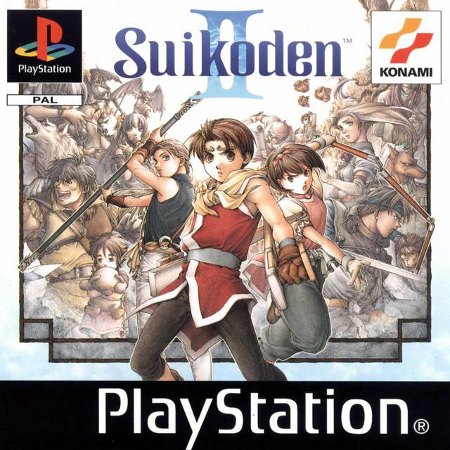
Chris: In a brief return to video game scoring, you surprised listeners with its big band performances on Moonlit Shadow. What attracted you to this collaboration with Yasunori Mitsuda? How did you pull off such an authentic and stylish soundtrack?
Miki Higashino: Immediately after my child was born, I received an offer from the creator of Suikoden, Yoshitaka Murayama. He was my most important boss from way back, so I didn’t want to refuse. By the time I signed on to the project Mitsuda-san had already written the theme.
I knew that approaching jazz would be exceedingly difficult, so I began to search intensely for a way to find jazz in my music. If it were bebop or acid jazz, I found, I could pull it off. But there wasn’t as much time as I needed. On top of that, my hands were so full caring for the baby that I couldn’t even sleep. In the end, I probably caused a good deal of trouble for my family, my client, and Mitsuda-san. That’s why I decided afterwards to leave off work for a while.
Chris: You have made guest contributions to several other releases, namely pop’n music 15, Otomedius G, and Ge-On-Dan Super Rare Trax. Could you tell us about each of them? What do they reflect about your musicality today?
Miki Higashino: For pop’n music 15 Adventure, my friend Shoichiro Hirata-san handled the arrangement, SANA-san sung, and I wrote the music and lyrics. I love songwriting! I’ll get to Ge-On-Dan later.
Chris: The musical legacy of the Gradius and Suikoden series has developed with the contributions of artists such as Motoaki Furukawa, Norikazu Miura, and Basiscape. Have you continued to follow the series and, if so, what did you think of the scores? How would you have approached a sequel?
Miki Higashino: My senior, Motoaki Furukawa-san, created one of the strongest and most memorable pillars of the Konami shooter sound in Gradius II. At first glance, his style, working within definite genres, and mine, experimental and unique, may seem incompatible, but I think that later games in the series did an excellent job of combining them.
In regards to the later Suikoden scores, I haven’t had the time to listen to them, so I can’t comment.
I think that it is quite difficult to create a successor to someone else’s work. Personally, I would say that to add one’s own color and go for a radically different, fresh approach is more musically interesting than to be haunted by the ghosts of the past. And that applies even when the past work in question is one’s own. Of course, the producers hate that (laughs).
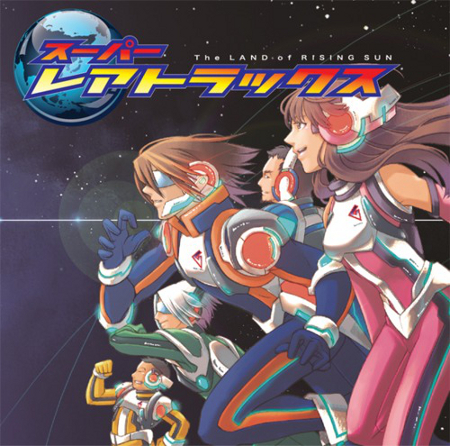
Chris: Many thanks for your time today, Miki Higashino. Should we expect more music from you in the future or do you wish to focus elsewhere? Is there any message you’d like to send to your fans across the world?
Miki Higashino: Hello everyone!
Last March, the Tohoku region was hit by a massive earthquake and tsunami, followed by the incident at the nuclear plant. I was shocked, and it took a long time to pull myself out of my feelings of sadness, but I’m better now. Thank you for all of the support you have provided for Japan.
After the disaster, people from all over the world bonded together, beginning on Twitter and Facebook. Now I feel close to even those who are very far away. It is a mysterious sensation, but also an exciting one.
Now then, for all of you who are wondering, what is Miki Higashino up to these days? I’m busy raising my child. But not long ago, a dear friend of mine, Yuji Takenouchi (TECHNOuchi), contacted me, and so I participated in Ge-On-Dan’s charity CD, Super Rare Trax: The Land of the Rising Sun.
The disc was sold exclusively at a three-day event in Tokyo called 4STAR, and although unfortunately it is no longer available, over 600 copies were sold and over a million yen donated. I contributed a new piece called Tomodachi to the CD. Even though I had also given my support through providing funds and supplies, I was overjoyed to be able to support the relief efforts through music. The music contains kindness and consolation, hope and prayers. It is dedicated to those who lost everything precious to them — their families, their friends, and their homeland.
Thank you so much for reading this very long interview through to the end. I hope that we meet again someday.
Miki Higashino
Posted on July 1, 2013 by Chris Greening. Last modified on March 1, 2014.

